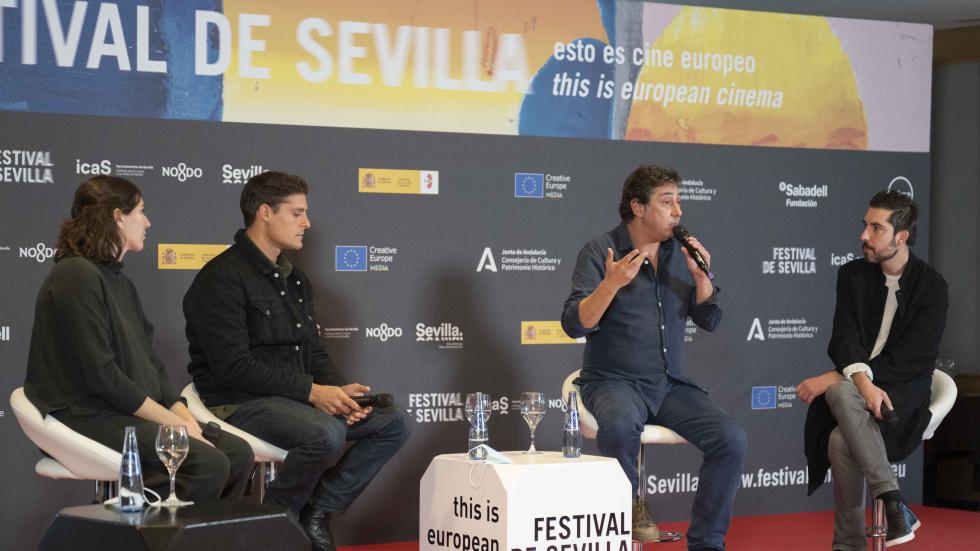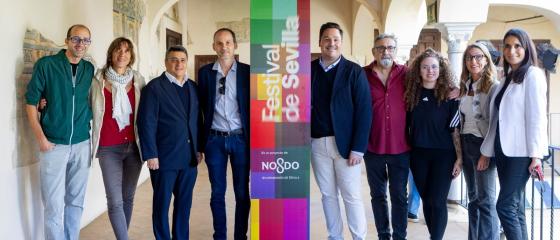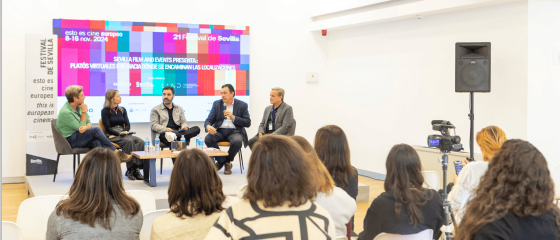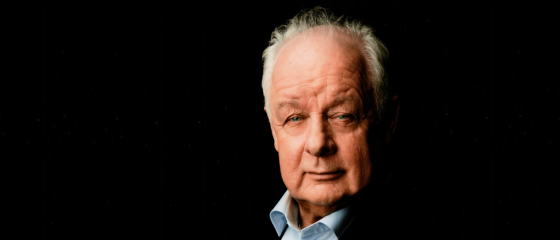The Seville Film Festival hosted today the presentation of two gems of the Official Section: Tsuga Diaries, by Miguel Gomes and Maureen Fazendeiro, and What Do We See When We Look At The Sky?, by Alexandre Koberidze
Seville, 9th November.- The fifth day of the Seville Festival has welcomed the prestigious filmmaker Miguel Gomes (winner of the Silver Giraldillo in 2015 with his triptych Arabian Nights) and the director Maureen Fazendeiro, both authors of Tsuga Diaries. A metacinematographic proposal that mixes the shooting of a film with the threat of COVID and the health measures that the pandemic has forced and that have affected, as could not be otherwise, the creation, the film crews and the cinematographic mechanism itself. On the other hand, the Gregorian Alexandre Koberidze has presented to the press What Do We See When We Look at the Sky?, an unconventional romantic comedy that arrives in Seville with the endorsement of the FIPRESCI Award from the international critics at the last Berlinale. Both films are competing for the Golden Giraldillo.
Miguel Gomes: ‘Co-directing a film was the continuation of having a daughter together.’
Gomes-Fazendeiro, also a couple in their personal lives, portray in Tsuga Diaries the coexistence of a film crew in a large summer house, after having passed the obligatory health protocols. Shot in analogue and 16 mm, and with the Covid19 as co-star, the feature film plays with time and editing using an unusual structure that opts for reverse chronology. Made up of 22 day-labels (in sequences usually consisting of two or three scenes), it starts on day 22 and goes backwards to day one.
Together with one of the film's main characters, Carloto Cotto, the filmmakers began by talking about their work together as co-directors, after previously collaborating on screenplays and also about sharing their lives as a couple. ‘It was a very easy process,’ confessed Maureen Fazendeiro. ‘In the middle of the moment that we were living, we decided to share together the risk of making a film where everything is unplanned. It was a very special moment as I was pregnant… We wanted to share a film when we already were sharing a life,’ a reflection that, laughing, Miguel Gomes highlighted, ‘Making a film together was the continuation of having a daughter. As Simple as that’.
At a press conference with the media at the Festival's headquarters, the filmmakers spoke of the formal commitment to inverse temporality with an anecdote. In this sense, Miguel Gomes explained that when they were in the first wave of the pandemic, in March 2020, they began to watch films at home. ‘We decided to watch the last film of John Ford and then we continued with the penultimate. We kept going backwards watching John Wayne getting younger and younger. I think that influenced the decision to make Tsuga Diaries with that reverse temporality.’
In that respect, Fazendeiro has pointed out that her intention was ‘to make a shooting diary that would integrate what would happen during the unscripted filming of our film. And we wanted to shoot a kiss, the most common scene in the history of cinema and the most difficult to plan in the middle of a pandemic. That had to be done at the end of the process, but we also intended it to be the first scene. The inverse chronology allowed it.’ Gomes added that ‘the film is about the idea of community, in a context of isolation due to the pandemic. I think that the climax is the moment when that community is formed on the first day at home. If it had been edited in a linear chronology, it would have been a sadder film, because the characters would be disappearing from the screen’.
Continuing with the visual composition of the film, Gomes emphasised that ‘the option of filming in 16 mm gave a very distinctive organicity to the image. Shot in this way, the contrast between light and shadows is very beautiful. We had that house with the trees and when the wind starts to sway their leaves everything ends up being very natural and organic. What we did was follow the wind and film it.’
Finally, Maureen Fazendeiro elaborated on another of the keys to the creative process: ‘The film was written, and almost also edited, as we were shooting. Every day we filmed what was planned and we kept an eye on what was happening to add scenes. In the end, the editing was easy and quick.’
Alexandre Koberidze: ‘I wanted a story of a different kind of love, with magical elements on it.’
Alexandre Koberidze, from Georgia, has presented his second feature film after the debut of his film Let the Summer Never Come Again (2017). In his new work, What Do We See When We Look at the Sky?, he plays with the role of chance in love impulses and life hopes. An empathetic and subtle film, vital and very luminous, which also captures the daily life and the atmosphere of the streets of the city of Kutaisi, the historical capital of Georgia.
Koberidze began by explaining the genesis of a love story as unusual as it is fascinating. ‘I wanted to make a different film, in which there would be room for magical events, which we are not used to experiencing in our lives.’ The dynamic established between the actors was part of a directing process that Koberidze has explained: ‘There is a lot of theatrical life in Georgia, but very little filmmaking. So a director has a wide range of people capable of acting, whether they are professionals or not. We went around a lot of small towns looking for possible actors. We had our eyes open, although I was clear that I wanted the main characters to be linked to Kutaisi, the city where we shot.’
On the subtle and captivating sense of humour that can be glimpsed in What Do We See When We Look at the Sky?, the filmmaker explained that, ‘there was a desire to make a film without dialogue, silent, like those of the beginning of the last century. So composing visual gags is at the heart of the beginnings of cinema. And that, in a way, is in the tradition of filmmaking: to contain and capture those funny moments that had to be in our film.’
Finally, Koberidze commented on his experience as an actor in another of the films programmed at the Seville Festival, Bloodsuckers, by Julian Radlmaier, a comedy screened in the New Waves section. ‘Julian and I started more or less at the same time. I've appeared in almost all of his films, it wasn't strange to repeat. Acting comes very naturally to me, and working with him helped me to better understand the process of creating a feature film. The pity is that I made Bloodsuckers after What Do We See When We Look at the Sky? Otherwise I could have used the experience to contribute to my film.’







